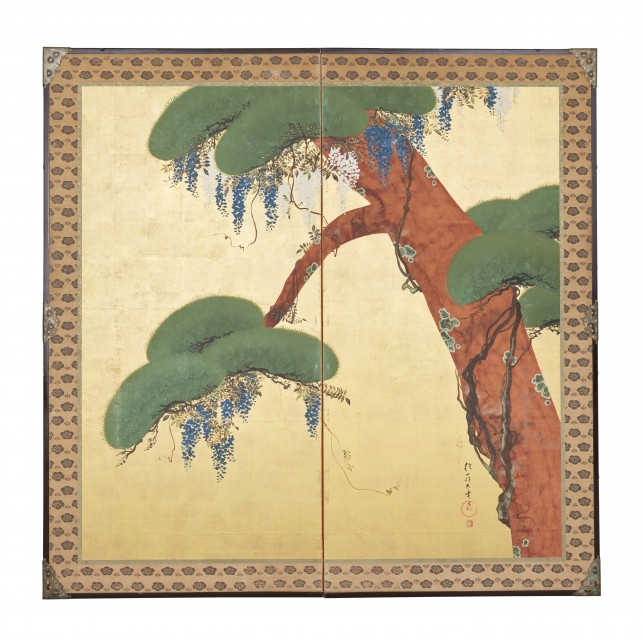
Pine and Wisteria

Photography by Synthescape, Digital image © Asia Society
Sakai Hōitsu
Pine and Wisteria
Dated 1810-1819
Japan
Two-panel folding screen; ink and color on gold leaf on paper
Image only, H. 60 1/2 x W. 61 1/4 in. (153.7 x 155.6 cm)
Asia Society, New York: Mr. and Mrs. John D. Rockefeller 3rd Collection, 1979.218
Licensing inquiries
This two-panel screen is the work of Sakai Hoitsu (1761-1828), one of the most important artists who worked in the Rinpa tradition in the early 19th century. Rinpa painting is characterized by bright colors, bold forms, lavish surfaces, and the frequent use of bird's-eye perspective. The modulated shapes of the trunk and branches, and the representation of the pine needles in cloudlike clusters of the pine tree that dominates the right half of the pair of screens typify the work of this school. The painterly techniques -- for example, the formation of the tree without contour lines and the layering of one color of wet wash into another to create textures -- also characterize Rinpa painting. The union of the pine (male) with the wisteria (female) is a symbol of love in Japanese art and literature; it is possible that this screen was commissioned either for use at a wedding ceremony or as part of a dowry.
